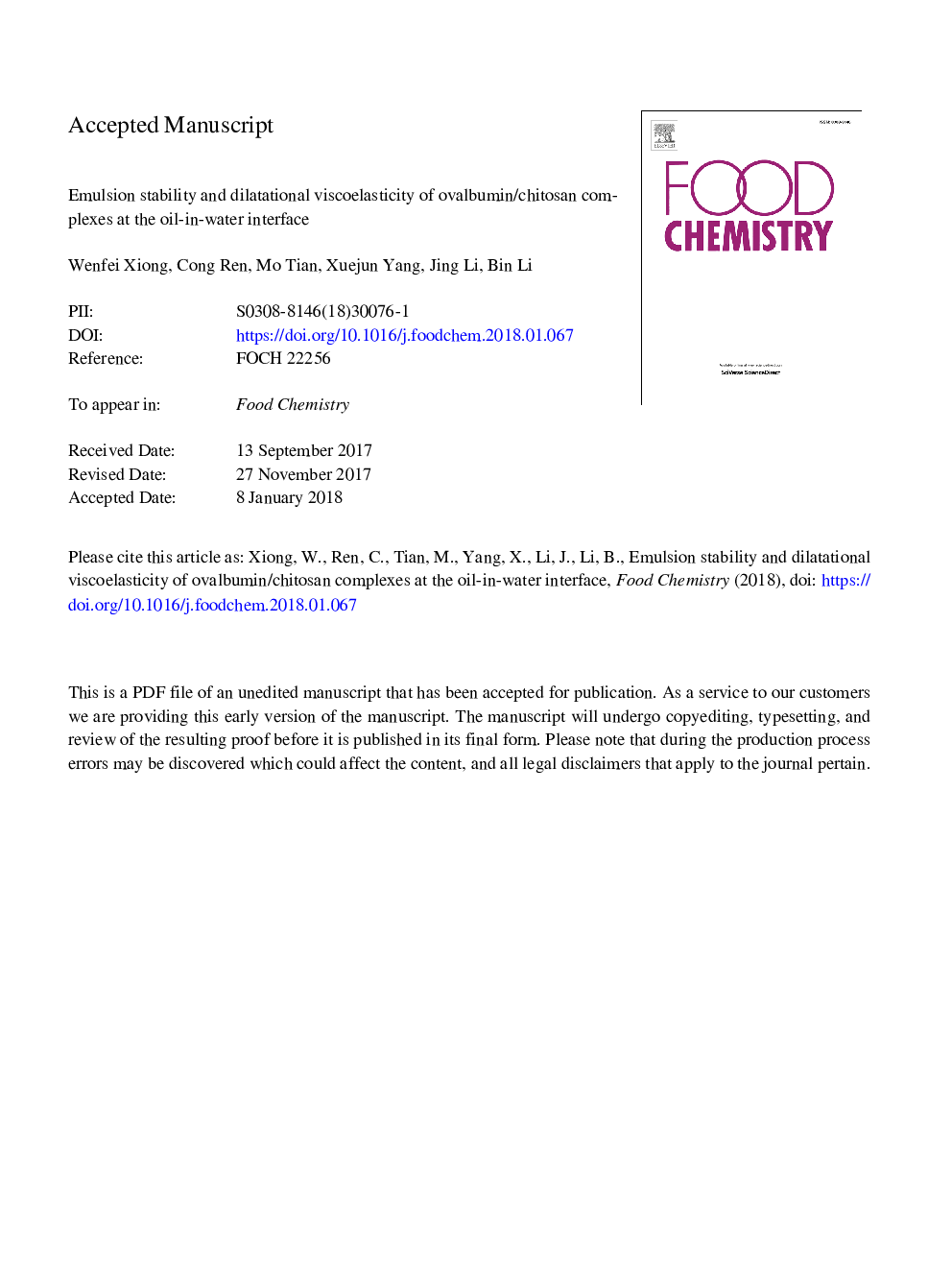| Article ID | Journal | Published Year | Pages | File Type |
|---|---|---|---|---|
| 7585695 | Food Chemistry | 2018 | 23 Pages |
Abstract
The contribution of the emulsion rheological properties and the viscoelastic of the interface adsorbed layer to the emulsification mechanism of ovalbumin (OVA)-chitosan (CS) mixtures were investigated. In comparison to the treatment with OVA alone and OVA/CS mixtures at pH 4.0, the addition of CS at pH 5.5 increased the size distribution of emulsion droplets with significant flocculation through polyelectrolyte bridging, remarkably enhancing the emulsions stability against gravity creaming after storage at 25â¯Â°C for 14â¯days. The dynamic rheological properties indicated that the formation of the complex at pH 5.5 increased the elastic modulus (Gâ²) and apparent viscosity (ηâ) of the emulsions, which is useful for inhibiting creaming. Moreover, the complexation of OVA and CS at pH 5.5 increased the dilatational modulus (E), especially the elastic modulus (Ed), of the oil/water interfacial absorbed layer, which could reduce the droplet coalescence and therefore inhibit the growth of emulsion droplets.
Related Topics
Physical Sciences and Engineering
Chemistry
Analytical Chemistry
Authors
Wenfei Xiong, Cong Ren, Mo Tian, Xuejun Yang, Jing Li, Bin Li,
